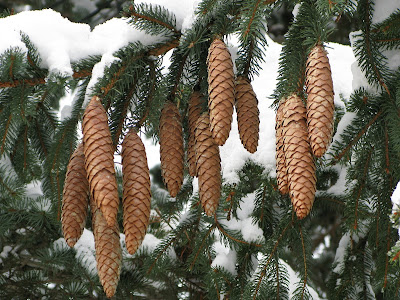 |
| Metasequoia glyptostroboides - Dawn Redwood |
Metasequoia glyptostroboides commonly known as Dawn Redwood,
is native to China. Although shortest of the redwoods, it grows to at least 61
m (200 ft) in height. Previously it had been known to science only as a
fossilhence, now, its odd name and fame as the ‘fossil tree’. It grows
naturally only in isolated areas in East Szechwan and West Hopeh, China, Where
it thrives best in shady moist localities, in ravines and on stream banks. By
1948, seedlings were being raised in Europe, and because the tree strikes
fairly easily from cuttings it has since been widely planted as specimens by
arboriculturists, and in a few small groves by silviculturists, as in 1953 at
Leighton in Montgomeryshire, Huntley in Gloucestershire, and in 1955 at
Bedgebury in Kent.
The tree has ascending branches, and persistent branchlets
(reddish-brown when young) which carry green deciduous branchlets 8 cm or more
in length. The small opposite winter buds are usually below the scar of the
side shoot. The two-ranked needles, usually 2.5 cm or more in length, are
arranged in intricate and delicate patterns. It is one of the first trees to
show green in spring – a pale fresh green – later turning to bright green on
the upper surface lighter green or slightly glaucous on the under surface.
Throughout summer the foliage changes through various shades of
greenish-bronze, often with a pinkish tinge. In year of average autumn colors,
the foliage has a moderately long spell of a yellowish pink and salmon pink
before going pale brown, but in good sunny years it changes from this pink
through brick-red to a rich dark rust-red. In autumn the needles are
reddish-brown before they are shed along with the deciduous branchlets.
The male flower is ovoid, up to 1 cm long; the female
conelet is sub-globose or short cylindrical, about 2 cm long, and pendulous.
The rough bark is soft and of pinkish-buff or reddish-brown
shades. The older European trees are beginning to develop the picturesque
ruggedness reported from China an unfortunately for the silviculturists, to
develop knotty, ridged and pocketed boles with rapid taper. The tree grows
rapidly at first (up to 1 m a year) and continues to tallest are already over 20
m. (66 ft).





























































